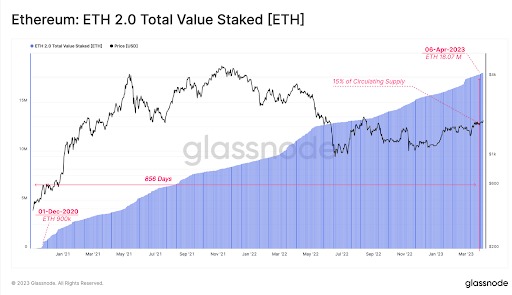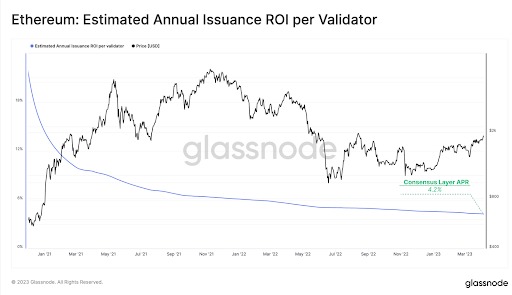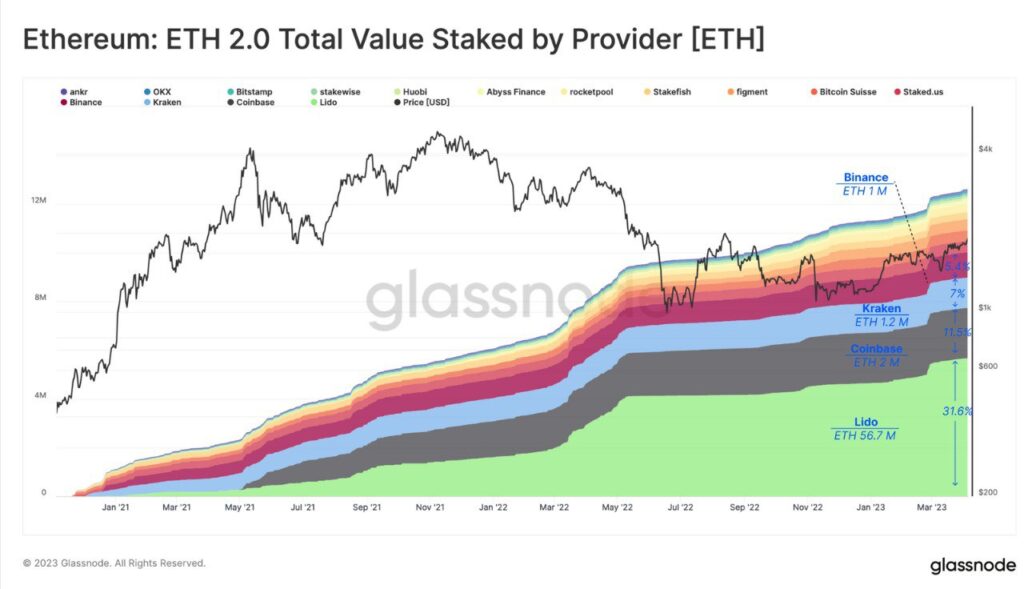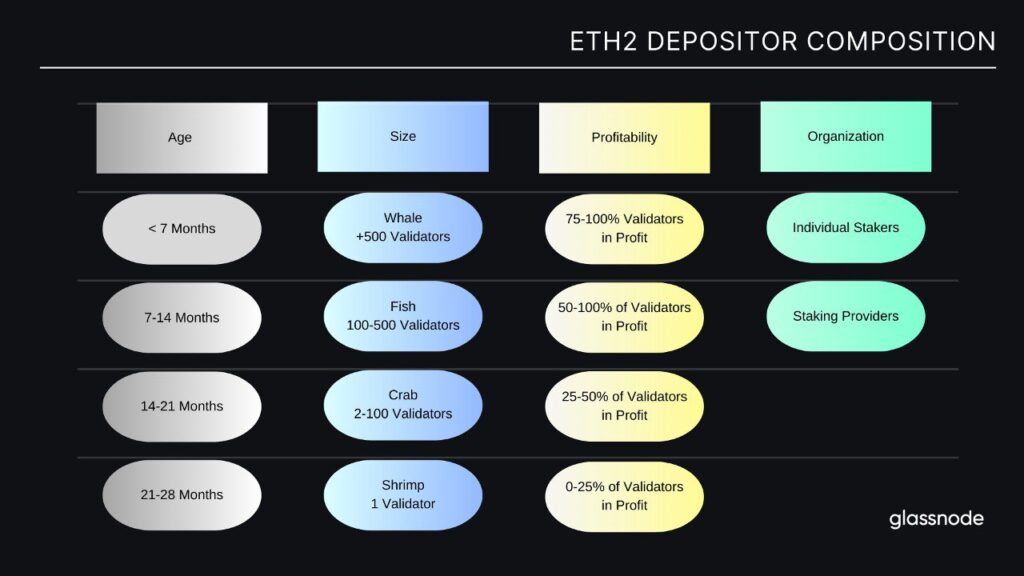- The hard fork will not have a “dramatic” impact on the price of Ethereum.
- On average, those who staked ETH before the upgrade are down 12.7% from the price point.
Ethereum has moved one step closer to a fully autonomous proof-of-stake system after its long-awaited Shanghai upgrade takes hold on the world’s second-biggest blockchain.
On April 12, the main feature of the Shanghai upgrade, known as EIP-4895, went live. The upgrade now allows some users to withdraw their staked ETH while introducing other features tangential to stake unlocking. Crucially, the new upgrades aim to reduce the gas fees that Ethereum developers pay.
According to data from Etherscan, only 170,000 ETH of the 18.1 million ETH staked on the Beacon Chain will be unlocked within the first week of the Shanghai fork. As well, there is a withdrawal queue for the Shanghai upgrade that allows only 115,220 requests per day to be processed.
According to a report by the research analytics firm Glassnode, the hard fork will not have a “dramatic” impact on the price of Ethereum because only 22% of the ETH staked before the upgrade is currently in profit.


On average, those who staked ETH before the upgrade are down 12.7% from the price point at which the ETH was staked ($2,136), considerably lower than ETH’s current price of $1,875, representing total unrealized losses of $4.7 billion, according to Glassnode.
“After the peak unrealized loss of $16B in July 2022, the net unrealized loss now amounts to $4.7B. It is mainly carried by the Whale sized depositors, who hold a 76% share of the unrealized losses,” Glassnote observed.


CryptoQuant, another research analytics firm, agreed. In a report it released in February, they argued: “that there would be low selling pressure for Ether from staking withdrawals after the Shanghai upgrade.”
Shanghai Goes Live Industry Reactions
Zhuling Chen, the CEO of crypto staking service RockX, noted in a statement that the staking landscape will handle more transactions per second and will create substantial long-term upgrades.
“Ethereum’s capacity to handle more transactions per second increases, transaction costs decrease, and the security and efficiency of smart contracts improve,” Chen wrote.
Bob Baxley, a builder of the Maverick Protocol, wrote that he believes the Shanghai upgrade “will lead to war,” similar to the battle fought over stablecoin liquidity dominance.
“I believe that Shanghai will provoke a period of intense competition among liquid staking protocols that will come to be known as the ‘Liquid Staking Wars,’ he noted.
“Those of us who were here for DeFi Summer will remember the Curve Wars well: the ruthless competition between the emerging stablecoin protocols,” Baxley wrote.
Tranchess founder Danny Chong said that the upgrade would lower the risk of liquid staking, also known as “soft staking,” which allows investors to earn rewards, typically in the form of a token, for locking assets into a pool.
“Earning yield from liquid staking shares similarities with certain traditional financial instruments such as bonds or stocks that offer interest payments,” Chong told Forkcast. “Hence it would likely attract TradFi [traditional finance] participants who are familiar with such instruments.”
According to on-chain data provider DefiLlama, the total value of all crypto assets currently locked into staking services stands US $17.3 billion, up from US $14 billion in March.
Recommended For You







